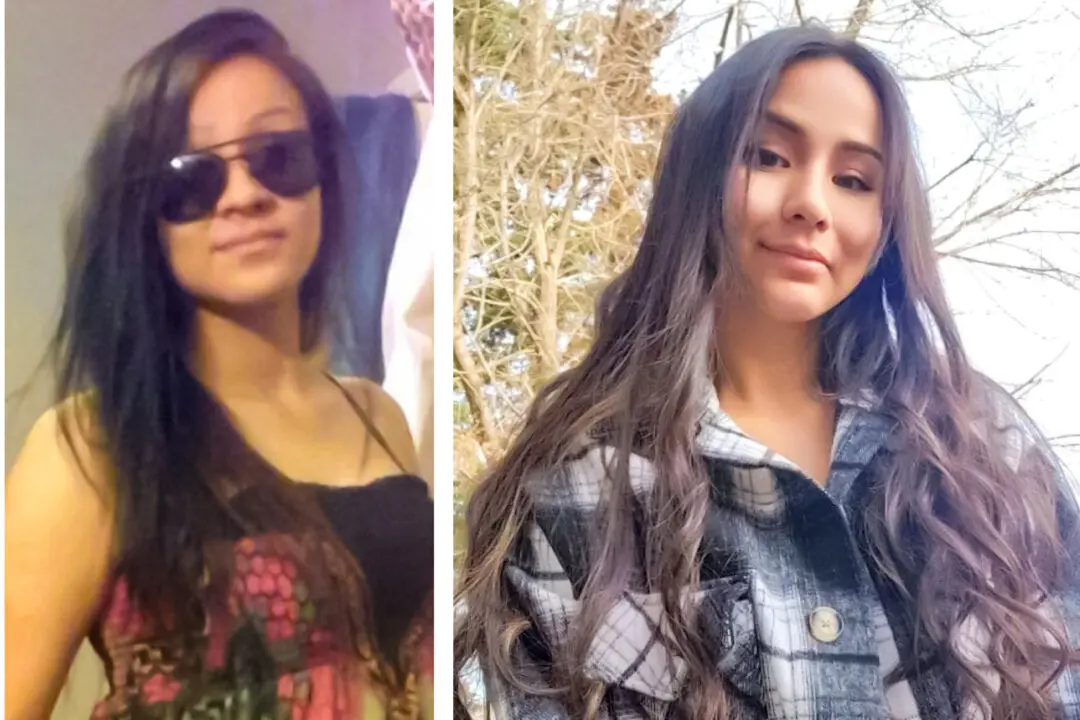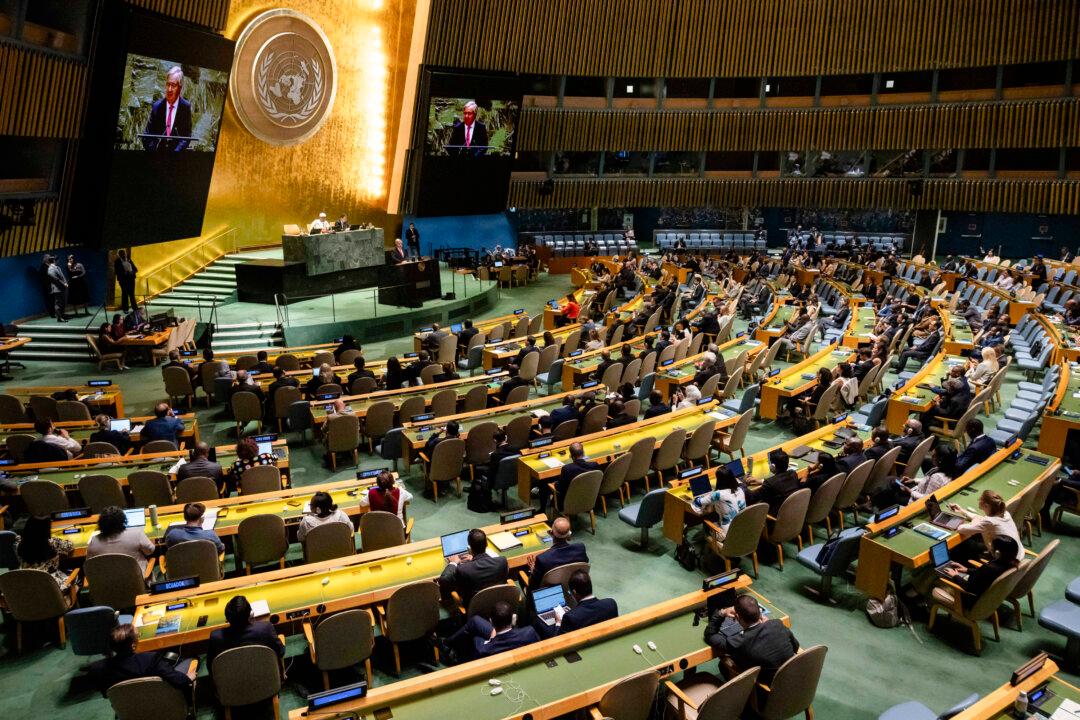Danielle Swampy grew up on a reserve in central Alberta in a home that was falling apart, literally and figuratively. Both of her parents were addicted to crack. Her eight siblings all grew up to be addicts. Her boyfriend’s parents were addicts.
“All I ever seen was addiction. It was normalized. Everyone in my family did it,” Ms. Swampy told The Epoch Times. And getting out of it was practically unheard of.
Ms. Swampy did though—but not before experiencing some horrifying events.
She left home in a stupor one night and passed out on the street, leaving her toddlers home alone. Child services took them away. At her lowest point, she was kidnapped and tortured for days by a group of men because of her drug debts.
Father Her Best Friend Despite Abuse
Ms. Swampy was raised primarily by her father. She was young when her mother left and she saw her only on occasion.“There were days when I would be crying because my stomach was hurting from so much hunger,” she said. Her home didn’t have clean water, so she would go to a neighbour’s to fill jugs.
“Whenever my dad would get too drunk or something, he would sort of take his anger out on me, quite often hitting, stuff like that. But I would do the same thing,” she said, so she didn’t consider it abuse.
Despite their difficulties, her father was her best friend, she said.
He tried to keep her safe, or at least what he considered safe, and so he allowed her to have parties at their house. “The way he viewed it was that if we did it in front of him, then at least he'd know I was safe rather than me doing it behind his back.”
She started smoking marjiuana when she was 12 and soon got into drinking and taking pills, including oxycodone and “benzos” (benzodiazepines, a depressant).

When Ms. Swampy was 14, she became pregnant. She and the baby’s father continued in a relationship and prepared themselves for parenthood as best they could.
“I was still having a lot of issues with my own addiction as well as his addictions,” she said. “But I knew at that time that I didn’t want to continue down this path after I had the child.”
Baby Girls
She stayed sober through the pregnancy, and pregnancy was the only thing that kept her sober, she said. Without it, “I couldn’t go a single hour. I needed to be on something all the time.”She had a baby girl, whom she raised for the first year while living in the group home. But in time she went back to doing drugs.
“And then I got pregnant again.” She was 16.
She and her boyfriend decided to move to Red Deer, about 8 kilometres from the Maskwacis reserve where she grew up.
“For a while, we were doing okay. We were doing alright. We were only smoking weed, we weren’t doing anything else.”
She had a second baby girl.
She and her boyfriend were close to turning 18, when they were due to receive a comfortable payment of government money. “We had plans to make our lives better for ourselves and our children,” she said.
But they started getting into harder drugs and heavy drinking became a problem. Her boyfriend’s mother died, which was hard for them both to cope with.
Then one night, Ms. Swampy decided to drink by herself after she had put the kids to bed and while her boyfriend was out.
“I ended up blacking out. I don’t remember what happened,” she said. Her boyfriend came home at some point, and they had argued.
“I ended up leaving that night, completely wasted, not remembering. And it was during the dead of winter,” she said.
The police found her passed out in the snow and put her in a cell for the night.
Her boyfriend had left the house, too, not thinking about the children there. Their older daughter was 3 at the time and the youngest was 1.
They shared a house with a tenant in the basement who worked for children’s services. “So when our kids woke up around the middle of the night, and were crying and [the tenant] realized that no one was responding to that, they called children’s services. My kids were apprehended that night.”
“It was torture when I woke up the next morning and realized,” she said.
“I just kind of gave up at that point because I thought they would be better off without me,” Ms. Swampy said.
For the first six months, she tried to stay clean in the hope of getting her children back. But she kept turning to drugs to deal with the stress of her situation.
“I felt myself giving up at that time, giving into the urge to just drink all the time, to use [drugs] all the time. And this was the year that I actually started using meth,” she said.
After her first use of methamphetamine she spent the next three days in a deep depression. “I laid in bed contemplating suicide basically. I don’t even know why I started doing it again. Because that first time was horrible.”
At the end of the six months she had a court date and failed the scheduled drug test. “I knew I used that morning, so I already knew that it wasn’t gonna turn out very good.”
What she was told in court that day made her feel unfit to be a mother.
“They pretty much had me convinced that I was too young to be a mom. I shouldn’t be doing this job, that I should just allow somebody else to. They pretty much convinced me that I couldn’t be a mom to my kids,” Ms. Swampy said.
“I broke down and I cried and I ended up signing a piece of paper that just signed my children away, basically. It gave them all rights.”
The Darkest Dark Before the Light
It was around this time that her little brother, who was 15, committed suicide. “He was the type of kid that fell through the cracks,” she said.Her father’s health, which had been declining for years, swiftly deteriorated after that, and within three weeks, they buried him as well.
“There was a lot of deaths happening at this time and throughout my whole life. On my reserve, there’s death all the time,” she said. Two of her other siblings have also committed suicide.
She and her boyfriend broke up and she decided to move to Edmonton to try starting fresh, but her life there became even worse.
She had a new boyfriend and he beat her frequently. She became homeless and started injecting meth into her arms.
“I was doing it so often, four to five times a day. The longest time I stayed awake from that was 12 days in total,” she said.
Danger was all around her.
“Something was always happening. There was always shootings. I’ve been in multiple situations where a house I was in was getting raided or someone was getting beat up, someone was getting stabbed, as well as myself. I was always getting beat up wherever I went,” Ms. Swampy said.
“And then a situation happened that completely shattered my world,” she said. “There was a situation that happened to me that was either going to kill me or save me. Looking back at it now, it definitely saved me—I mean, it killed me first and then it saved me.”
It happened several years ago now and although she has spent a lot of time dealing with it throughout her recovery, it remains hard for her to talk about.
“I ended up getting kidnapped and tied up for three days in a house to pay off a debt while I was drugged up by multiple men,” she said. “I remember glimpses. I remember being tortured, beat up, drugged.”
She said being drugged saved her, in a way, from experiencing the full horror of the situation. Her captors injected her with heroin and fentanyl, which she continued using after she was released.
“I was basically trying to kill myself. I was trying my best to overdose,” she said.
Stealing cars became her main way to get drug money.
She knew she couldn’t continue what she was doing. One day while in downtown Edmonton looking for drugs she had in mind three options for her future: running away to another city, killing herself, or getting treatment.
It was then that a woman she didn’t know walked up to her.
“She just randomly came up to me and she handed me a small little makeup bag. It was in the shape of lips. She handed it to me and she was like, ‘Here, give this to someone you know. I have no use for it,’” Ms. Swampy recalled.
“I looked inside the bag, and it was two bracelets big enough for two little girls.”
Recovery and a Final Test
She was given a bed at Poundmaker’s Lodge addiction treatment centre in Edmonton. It’s a 12-step, abstinence-based recovery that combines indigenous traditional wisdom with the standard 12-step addiction recovery program used by Alcoholics Anonymous.Ms. Swampy spent a year in recovery programs, and the biggest test she faced along the way was coping with another death. Her mother’s.
“Our relationship was always difficult over the years, but she was still my mom, she was still there in some ways,” Ms. Swampy said.
“She was very proud of me. Actually, I was the only daughter of hers that she was proud of, because all of my sisters and brothers—like I said, my entire family were addicts.”
Ms. Swampy had always turned to drugs to deal with pain, especially with the other deaths in her family. When she was able to get through the grief over her mother without relapsing, she knew she could stay clean.
She has been sober for more than six years now. She lives in a four-bedroom house with her two girls, who are now teenagers. From the time she lost them to the time she got them back, more than eight years had passed.
It has taken a lot of work to rebuild her relationship with them. But they see that, out of all the people in their life, all their family, their mom is the one who has put the work into recovering so she could be there for them.

Ms. Swampy is in college studying child and youth care, and she said she has learned that the absence of a mother in a child’s early years makes an impact on their attachment. She can see it with her own girls.
“My youngest, she’s very detached. It’s hard for me to forgive myself sometimes. But she’s trying and I’m trying, so I only have hope that our relationship will continue to get better,” Ms. Swampy said.
“They don’t necessarily like that it has taken so long, but they know that I’ve worked very hard to get them back,” she said.
“All the things that have happened throughout my recovery, I just keep telling myself, as long as I stay clean, It’s going to be okay.”
She now helps others in recovery at Poundmaker’s, and her message for others on the difficult road out of addiction is always, “Just don’t give up. Everything is going to be okay as long as you continue to do the next right thing and stay clean.”







